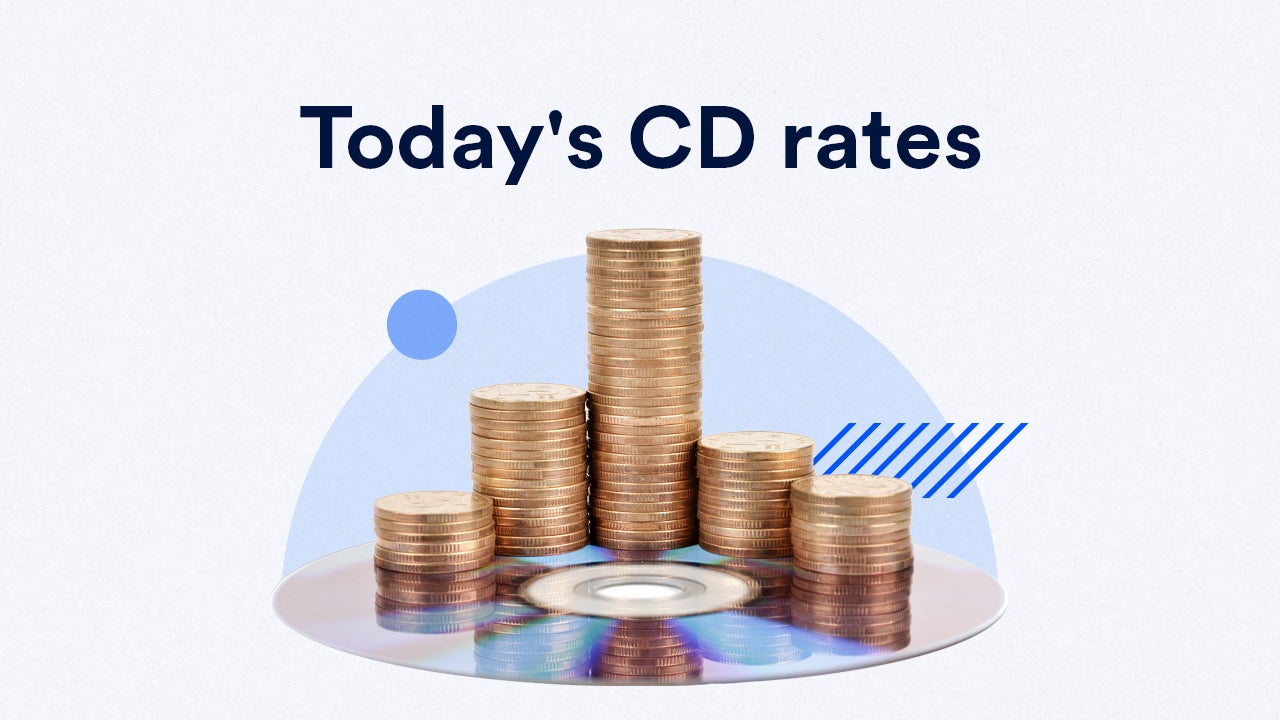Top CD rates today: July 2, 2024 | Take advantage of high rates

The Bankrate promise
At Bankrate we strive to help you make smarter financial decisions. While we adhere to strict , this post may contain references to products from our partners. Here's an explanation for .
Key takeaways
- The highest CD rate across terms is 5.35% APY, offered on a 6-month CD.
- In addition to choosing a CD based on APY, consider the minimum deposit requirement.
- National averages are significantly lower than top rates, so it pays to shop around.
Like a savings account, a certificate of deposit (CD) is an account where you can stash some of your savings, usually risk free, and earn a nominal amount of interest. A CD differs in that it offers a fixed interest rate for the duration of its term; if you enroll in a CD before interest rates fall, your CD’s rate remains the same for its term. What’s more, a CD rate can be higher than the rate on a standard savings account, although a CD usually requires that you commit your cash for the entire term, with early withdrawals resulting in a penalty.
CD rates are seeing declines as the Fed moves closer to a possible rate cut later this year. Yesterday, the top rate across terms was available from CIBC Bank. However, its one-year rate saw a significant decline from 5.36 percent APY to 5.09 percent APY. Today, the new leader across CD terms among banks we monitor is Bask Bank, which is offering 5.35 percent APY on a 6-month term and requiring a $1,000 minimum deposit. In today's rate environment, many shorter terms are earning higher yields than longer ones.
Bankrate’s table below shows the highest yields offered on widely available CDs, by term. It also lists national average CD rates and how much you’d earn for each term with a $5,000 investment.
Today's CD rates by term
| CD term | Institution offering top APY | Highest APY | National average APY | Estimated earnings on $5,000 with top APY |
|---|---|---|---|---|
| 3-month | America First Credit Union | 5.25% | 1.26% | $64 |
| 6-month | Bask Bank | 5.35% | 1.74% | $132 |
| 9-month | Forbright Bank | 5.30% | N/A | $197 |
| 1-year | CIBC Bank USA | 5.09% | 1.81% | $255 |
| 18-month | Bask Bank | 5.00% | 1.91% | $380 |
| 2-year | First Internet Bank of Indiana | 4.76% | 1.54% | $487 |
| 3-year | First Internet Bank of Indiana | 4.61% | 1.42% | $724 |
| 4-year | First Internet Bank of Indiana | 4.45% | 1.49% | $951 |
| 5-year | First Internet Bank of Indiana | 4.50% | 1.43% | $1,231 |
Note: Annual percentage yields (APYs) shown are as of July 2, 2024. APYs for some products may vary by region.
N/A: Not available; Bankrate doesn’t track national averages for the 9-month CD term due to limited available data. Estimated earnings are based on the highest APYs and assume interest is compounded annually.
Why should I put money in a CD?
A CD may be right for you if you already have an adequate emergency fund in a liquid savings account, because a CD requires that you lock in your funds for the entire term, be it as short as three months or as long as five years, or even more. Putting money that’s not needed for emergencies into a CD can benefit you because you’ll often find higher rates on competitive CDs than those offered on high-yield savings accounts.
In reporting which CDs offer the highest APYs, Bankrate focuses mainly on CDs that are widely available. As such, banks or credit unions are usually ruled out that only offer their products to residents of a small geographic area. Also typically excluded are CDs that require customers to have additional accounts with a bank in order to qualify for the high rate.
What the current rate environment means for CDs
In 2022 and 2023, the Federal Reserve raised its benchmark interest rate a total of 11 times, bringing its current target range to a 23-year high of 5.25-5.50 percent. However, the Fed has left rates unchanged for seven straight meetings, due to inflation not slowing as quickly as it has in the past.
Yields on competitive savings accounts and CDs tend to move in lockstep with the Fed’s interest rate moves. As such, many banks increase their yields when the Fed raises rates, and they lower yields when the federal funds rate drops. While the Fed has held rates steady since July 2023, top CD APYs ended up peaking in late 2023 and have since been decreasing gradually.
Is it still a good time to open a CD? “Even though CD yields have pulled back a bit, you’re still able to lock in yields that are well in excess of inflation and do so for multiple years,” says Greg McBride, CFA, Bankrate’s chief financial analyst. “The declines will likely accelerate as we get closer to the Fed beginning to cut interest rates, so there is no sense in waiting.”
CD FAQs
Research methodology
Bankrate calculates and reports the national average APYs for various CD terms. Factored into national average rates are the competitive APYs commonly offered by online banks, along with the very low rates often found at large brick-and-mortar banks.
In June 2023, Bankrate updated its methodology that determines the national average CD rates. For the process, more than 500 banks and credit unions are now surveyed each week to generate the national averages. Among these institutions are those that are broadly available and offer high yields, as well as some of the nation’s largest banks.